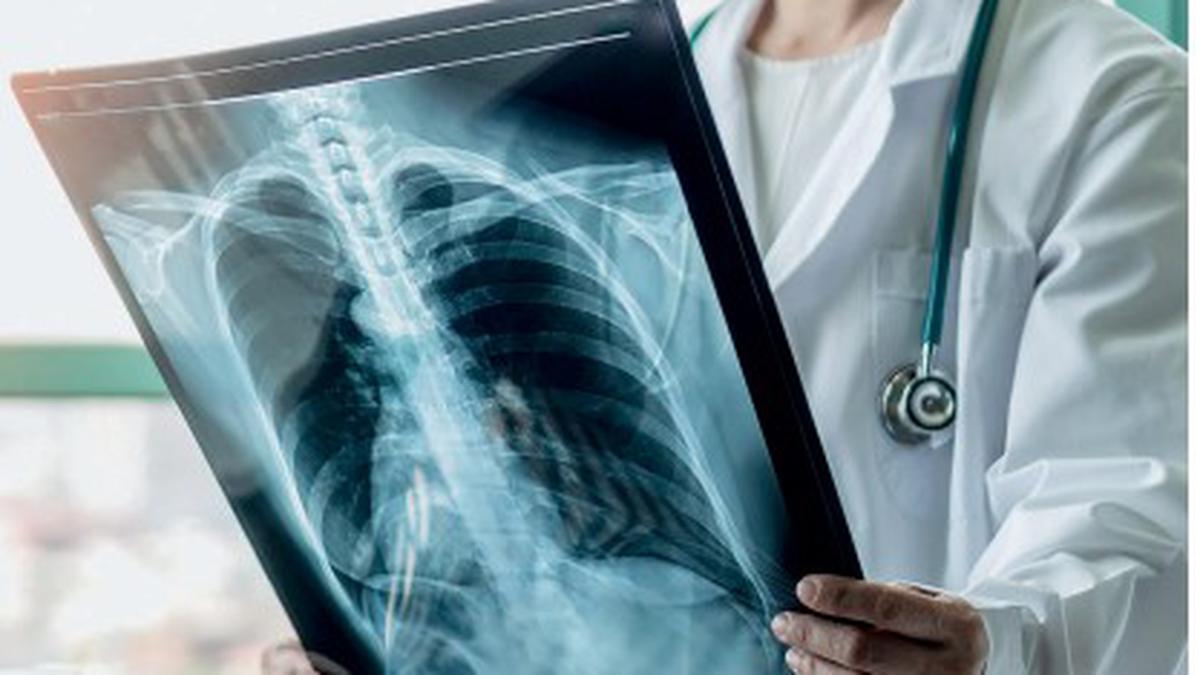
Chest X-ray interpretation using AI can detect more TB cases Premium
The Hindu
India has a powerful AI-assisted chest X-ray tech to screen presumptive TB cases. qXR, developed by Qure.ai, can detect TB in less than a min, incl. subclinical cases. 43% of TB cases would have been missed without an X-ray. AI tech combined with molecular tests can vastly increase detection rates. qXR meets WHO reqs. with 90% sensitivity & 70% specificity. In India, 24 States use it in 150 sites, but not at scale. qXR can detect 80,000 incidental TB cases from 2.8M X-rays taken each year. WHO guidelines for AI-assisted X-ray detection restricted to people above 15 yrs, but qXR CE is certified for paediatric use. #India #TB #AI #XRay #Qure.ai #WHO
India has a powerful technology — AI-assisted chest X-ray — to screen presumptive TB cases. The AI algorithm (qXR), which was developed by the Mumbai-based Qure.ai, can help in early detection of people with presumptive TB disease in less than a minute, including people with subclinical TB. As per the 2019-2021 National TB prevalence survey in India report, nearly 43% of TB cases would have been missed if a chest X-ray was not included.
When used at scale for population-based screening or at least for targeted screening, the AI software combined with molecular tests for TB disease confirmation can vastly increase detection rates. Systematic screening for TB disease for early diagnosis is one of the main End TB strategies.
The qXR software got the European CE certification early this year. The Indian drug regulator too has cleared it a few months ago. The qXR was one of the three AI algorithms that the WHO had referenced to when updating the TB screening guidelines in March 2021. In 2021, WHO recommended the use of CAD products which use the AI to automate interpretation of digital chest X-rays for TB screening and triage in people older than 15 years.
Awaiting a nod
Though there are no restrictions on State governments to use the software for TB detection, the Central TB Division’s directive to States to procure and deploy the tool for early TB disease diagnosis will go a long way in widespread adoption. Since States look up to the Central TB Division, the absence of a policy guidance has led to low adoption of the powerful tool. The Central TB Division is yet to recommend the use of qXR as it is waiting for an approval from the Health Technology Assessment, which has evaluated three AI software, including qXR.
The qXR software meets the WHO requirement with over 90% sensitivity and more than 70% specificity in people older than 15 years. In a large study (The Lancet Digital Health) involving nearly 24,000 people aged over 15 years done in Bangladesh to evaluate the use of AI in detecting TB from chest X-rays, qXR had 90.2% sensitivity and 74.3% specificity. A 2019 study (Scientific Reports) found qXR to have over 95% sensitivity and over 80% specificity.
The 2019 study demonstrated that qXR has the “potential to increase capacity and aid TB diagnosis, especially in settings with a shortage of trained human readers” which is a huge shortcoming in using chest X-rays for TB screening.

The crowning achievement of American inventor William Painter’s career was, well, inventing the now-ubiquitous crown bottle cap. Oh, and not to forget, the bottle cap lifter to open these crowns, or what we simply call the bottle openers. A.S.Ganesh tells you how Painter changed the bottling industry forever…










